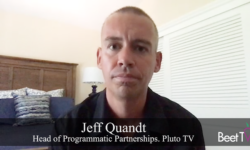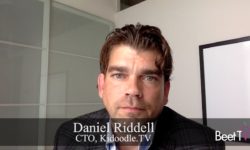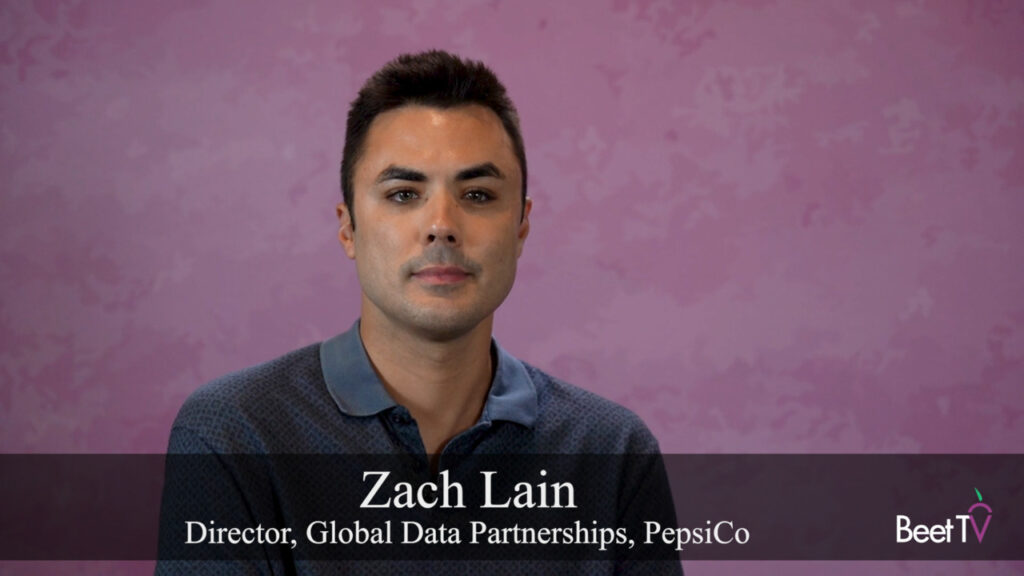How does the owner of TV properties like HGTV, Food Network, TLC and Eurosport like to sell its ads?
Via as many channels as possible, automatically – but with a high degree of business control.
In this video interview with Beet.TV, Bill Murray, Vice President, Programmatic Revenue and Ad Products at Discovery Inc, explains how the company is working with ad platforms in a range of different ways to maximize value from its inventory.
Toward guarantees
“With very few exceptions, we make all of our inventory available programmatically,” Murray says.
“We work with multiple SSP (supply-side platform) partners so that our advertising partners are able to transact through whatever DSPs (demand-side platforms) they like.
“Programmatic-guaranteed is increasingly a sales channel that is being leveraged by our advertising partners. It provides them with the ability to obviously leverage the technology and reporting and such that they’re able to get from the programmatic channel, but maintain that familiarity that they have from their traditional buying.”
Whilst programmatic trading techniques initially emerged in open-auction ad markets, lately the industry has begun using programmatic “pipes” but with tighter business rules, often allowing only pre-specified parties to enter into trading relationships and with mandated price rules.
Programmatic-guaranteed is the process through which ad buyers agree to buy a fixed number of impressions for a guaranteed price.
Programmatic uptake
Discovery has kicked open auctions into touch, believing its “premium” content, coupled with advertiser demand, mean it is more valuable to do direct deals with ad buyers, even though they are often facilitated through automated, programmatic technology.
It’s not that Discovery doesn’t still do direct ad sales. Murray says content like premiers and exclusive content sponsorships are still cooked up manually. But everything else is done programmatically.
“It’s made more sense for us right now to participate in either one-to-one private marketplace deals or programmatic guaranteed deals with advertisers,” he says.
“We do have some private marketplace deals with DSPs, specific DSPs, the numbers very few.
Supply-side symbiosis
As Discovery leans on SSPs to take its inventory to market, Murray says it works best when both the platforms and his company are in harmony.
“The best practises (and) the most important partnerships that we have with SSPs, they’re ones where we create, combine roadmaps, where we are pushing each other to advance this marketplace,” he explains.
“There are partnerships where, when we have an operational problem, we can call them and they almost advise us and vice versa. We do the same for them.”
‘SSPs are extensions of our organization’
But the level of working-together that Murray is describing now goes beyond mere “partnership”.
“We’ve gotten past the point where they’re just entry points into our inventory,” he explains. “They’re truly strategic partners.
“They’re almost technology arms of our organisation. And, in a lot of cases, they view us similarly as partners for them to build new products and to test them and put them out into the broader market.
“I would say that we have weekly meetings with them. We generally have quarterly business reviews with them or future quarter planning sessions with them. They’re there. We consider them an extension of our organization.”
Ahead with header bidding
Now Murray wants Discovery to benefit from a technology that has already revolutionized the ad rates that publishers can get from digital display.
Header bidding, through which platforms can let publishers entertain ad bids from multiple demand sources simultaneously, so as to get best bids all at once, is making the leap from the web and mobile to the living room, via connected TV.
Murray says that’s “inevitable” and “necessary”. “The evolution of OTT in the near future I think it will be interesting for organizations like Discovery,” he says.
“I think that there is an opportunity for increasingly marketers to try to access our audiences and to determine specifically which ones they’re interested in and when they’re associated with what content.”
This is from a Beet.TV series titled “The Accelerated Evolution of Programmatic OTT” presented by PubMatic. for more videos please visit this page.







































